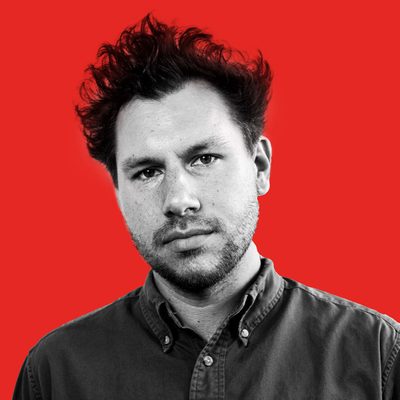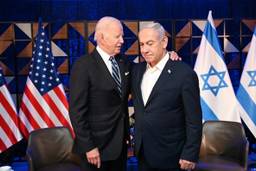How Chicago Broke the Neoliberal Fever
The Windy City has long been a laboratory for free market fundamentalism. But the election of Mayor Brandon Johnson and a landmark number of left-wing City Council members indicates the emergence of a new Chicago school.
Miles Kampf-Lassin
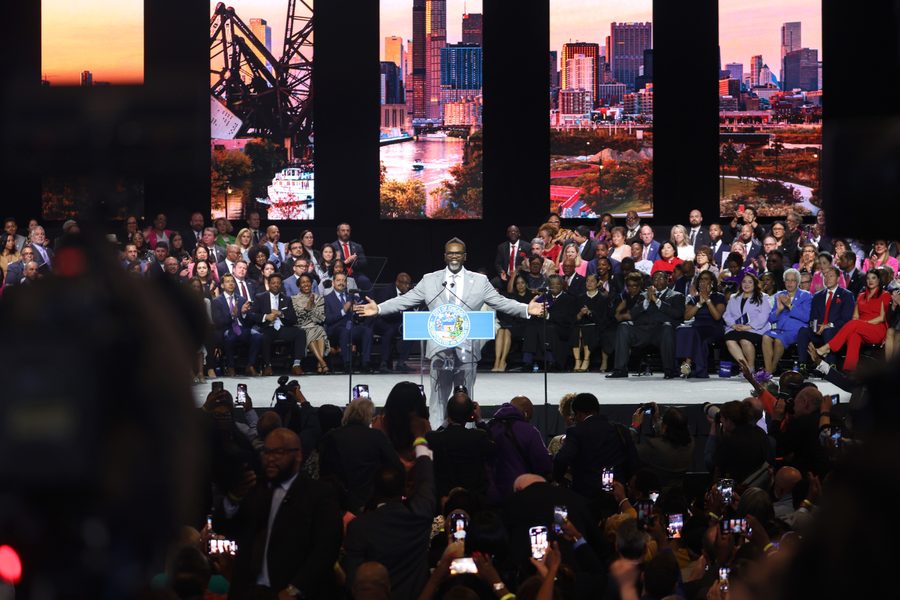
In The Shock Doctrine: The Rise of Disaster Capitalism, Naomi Klein diagrams the fundamentalist dream, held by right-wing economists, of creating an absolute state of market freedom. In Klein’s account, the true believer who most set this revelation into motion as a practical set of policies was Milton Friedman, who hoped to return society “to a state of pure capitalism, cleansed of all interruptions — government regulations, trade barriers and entrenched interests.”
Friedman shaped and spread these ideas through the Chicago school of economics, a conservative movement that entered the public sphere in the 1950s as a new class of scholars at The University of Chicago charted a vision of unfettered capitalism where private markets would supersede the state.
By the end of the century, the city of Chicago — where this doctrine emerged — had become a testing ground for many of its central tenets including privatizing assets, cutting taxes on corporations, and slashing budgets for vital public services such as housing, education and healthcare. But now, the tide appears to be turning.
This year’s municipal elections saw a historic number of progressive candidates elected to City Council, while labor organizer Brandon Johnson toppled privatization zealot Paul Vallas in the mayoral race.
These results signal a sharp turn away from the economic orthodoxy that has dominated Chicago politics for decades. And despite the coming impediments and obstructions they’ll likely face, the new political leadership is set to embark on a novel pathway for urban governance hatched through a reinvigorated labor movement and years of community organizing for social justice.
A fundamentalist turn
The Chicago school stood in stark contrast to the Keynesian worldview that prevailed in the United States from the early twentieth century through the post-World War II period. Proponents of this worldview urged the government to take an active role in setting monetary policy, to provide economic safeguards and to regulate business. The counter revolutionaries of the Chicago school, meanwhile, focused on carrying out their agenda by cutting corporate taxes, ending regulations and worker protections, and privatizing major aspects of the economy.
Following in the footsteps of Austrian economists Friedrich Hayek and Ludwig von Mises, the overall project of the Chicago school became known as neoliberalism, and it sought to stamp out social democracy in place of a system where financial power alone dictates decision making in the realms of politics and the wider economy.
While these neoliberal ideas sat on the fringes of mainstream economics in the early decades following their introduction, by the 1970s a series of economic crises roiling the United States and parts of Europe opened the door to alternatives to Keynesianism, and the free marketers quickly swooped in. Right-wing and conservative politicians served as champions of this agenda in the political sphere.
As Klein wrote, these crises or “shocks” are exactly what neoliberals seize on to implement their designs of a society that favors corporate power brokers and demolishes the social safety net. The Chicago school outsourced their designs around the world and “structural adjustment programs” were imposed on countries in the Global South like Chile, starting in the 1970s, to maximize profits for transnational corporations
The Shock Doctrine also points to the cyclical nature of these kinds of shocks being used to push through market reforms. Crises, even following natural disasters like extreme weather events, are in many ways manufactured by business and political authorities through starving communities of resources. The resulting economic chaos is in turn used as justification to implement policies such as privatization of public goods and lower corporate taxes, which are framed as disaster remedies. Instead, conditions of poverty and dislocation intensify, while private interests capitalize off of the orchestrated distress.
In the 1980s, the administrations of President Ronald Reagan and Prime Minister Margaret Thatcher moved the United States and the United Kingdom solidly in the direction of market fundamentalism through a suite of policies aimed at centralizing power in the hands of the business class and crushing organized labor. This shift has helped lead to over 40 years of swelling economic inequality marked by a widening wealth gap between the super rich and everyone else that now eclipses that of the Gilded Age.
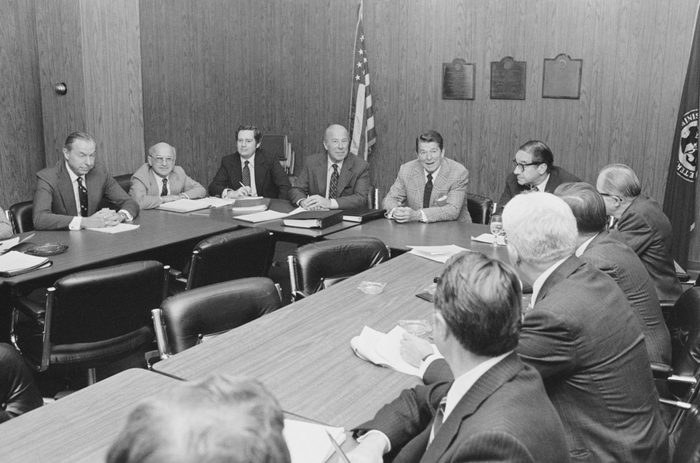
By the time President Bill Clinton came into office in the early 1990s, the political consensus of both major parties had swung towards the principles of neoliberalism. On a national scale, Clinton implemented policies like welfare reform (which cut public benefits) and paired the deregulation of big banks with plans for “urban renewal” and corporate education reform. These latter programs set the course for many metropolitan areas where big city mayors took them up, including Chicago’s longtime Democratic Mayor Richard M. Daley.
Under Daley (who was first elected in 1989 and served until 2011), Chicago became a poster child for the neoliberal agenda. Public housing was demolished in place of market-rate units, taxpayer-funded subsidies flowed to major corporations, unionized jobs were cut in the public sector and swapped out with contractors, regulations on businesses were eased — or lifted — and everything from city parking meters to janitorial services were privatized. But the area where this agenda was perhaps most visible was the public schools. As scholar Pauline Lipman asserts, Chicago became “the incubator, test case and model for the neoliberal urban education agenda.”
The experiments taken up included opening charter schools that were largely for-profit and non-union, enshrining standardized testing as the primary indicator of student achievement, and placing the entire school system under mayoral control, with an unelected school board and a chief executive officer who determined education policy for the city. As Lipman said, “[the] mayoral takeover is a case of the use of the coercive power of the state to enforce a neoliberal program.”
Many of these changes were carried out by Paul Vallas, Daley’s budget manager who became the first CEO of Chicago Public Schools (CPS). In that position, Vallas served as an architect of neoliberal policy at the city level, a reputation that earned him the nickname “Chainsaw Paul.” After leaving CPS in 2001 with the system in financial disarray, Vallas moved on to run school districts in Philadelphia, New Orleans and Bridgeport, where he continued to execute privatization plans that gutted public schools.
In an April report for In These Times, researchers David I. Backer and Jason Wozniak found that: “Vallas’ business-model approach to school districts has produced financial failures and created chaos for school employees, students and community members. The policies Vallas has implemented, along with his governing style, have at times mimicked the tendencies he once praised about Chile. It also appears that Vallas often puts corporate interests ahead of the people he’s supposed to serve.”
Even after Vallas’ departure, Daley continued instituting market based reforms including his now-infamous Renaissance 2010 plan, begun in 2004, that was formulated to close or “turn around” public schools that were deemed to be “underperforming.” According to Pauline Lipman and co-author David Hursh, Renaissance 2010 placed “public schooling under the control of corporate leaders who aim to convert public schools to charter and contract schools, handing over their administration to corporations and breaking the power of unions. … Such reforms not only disenfranchise the poor, people of color, students, parents, and educators, but also create an economically and spatially separate city.”
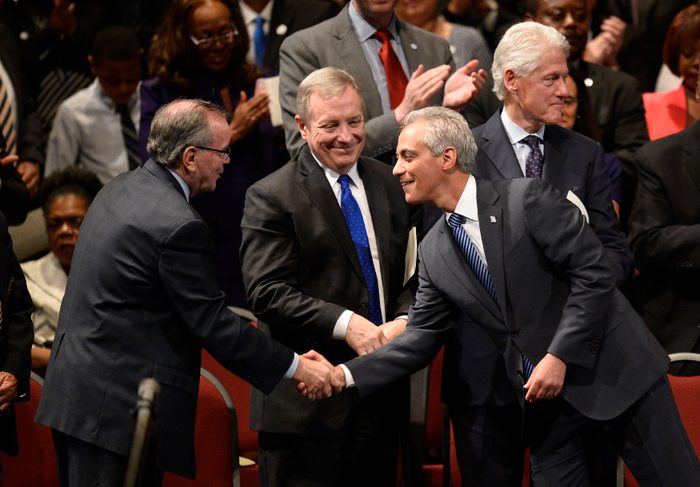
Teachers revolt
Daley was succeeded by Mayor Rahm Emanuel in 2011 and he continued his predecessor’s mold of carrying out fiscal austerity, implementing regressive fines and fees, and further privatizing city assets and services at an alarming rate.
Emanuel’s tenure also highlighted the extreme racial dimension of neoliberal policy, as communities of color already enduring disinvestment and endemic poverty faced increasing criminalization and demonization, especially for Black youth. This directly added to the crisis of police violence and mass incarceration. Meanwhile, Emanuel enriched his Wall Street backers, shut down half of the city’s public mental health clinics, closed a record number of public schools and went to war with the Chicago Teachers Union (CTU).
When Emanuel became mayor, the CTU had recently seen a sea change in leadership as the dissident Caucus of Rank-and-File Educators (CORE) won elections in 2010 and flipped the leadership with Karen Lewis taking the helm as the union’s new president. CORE initially formed as a study group reading The Shock Doctrine and applied Klein’s analysis of neoliberalism to the state of politics and education policy in Chicago.
CORE members saw the corporate reform agenda as an attempt to dismantle the public school system in place of a hyper-capitalist model meant to profit off of education — and believed organized resistance was the only way to stop that agenda. One of those members was Brandon Johnson, a middle school teacher who in 2014 told Strike for America author and Jacobin editor Micah Uetricht that under CORE, “it became a collective struggle rather than an individual struggle.”
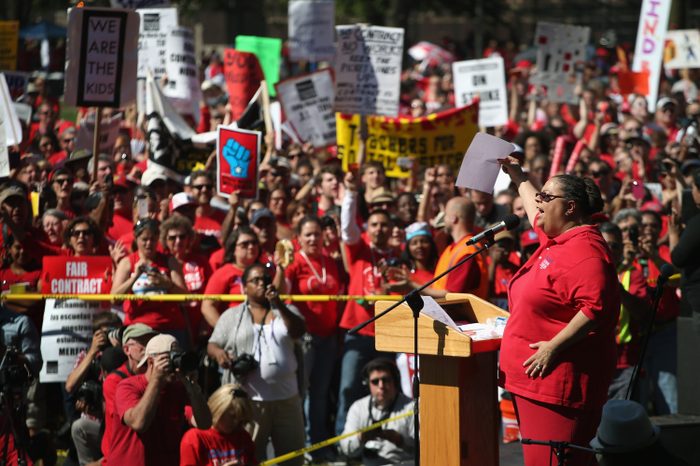
Emanuel’s provocative stance toward the CTU, coupled with his privatization plans, led to a massive strike in 2012 that saw over 25,000 teachers, clinicians and paraprofessionals take the streets to call for a more fair and equitable approach to public education. As CTU organizer Matt Luskin told Uetricht, “the overwhelming majority of CTU members really believe that this was a strike against the neoliberal corporate education reform agenda.” A key aspect of the strike was the CTU helping pioneer the strategy of bargaining for the common good, which means making demands centered on benefiting the larger community rather than simply over wages and working conditions.
The union put out a paper titled “The Schools Chicago’s Students Deserve” that outlined a broad array of prescriptions to benefit the public good, including smaller class sizes and more nurses and social workers in schools. It also called for more investment in the city’s poorest communities that the union said should be funded through increased taxes on the wealthy and corporate entities. The paper also proposed an end to subsidies for big businesses.
This form of social justice unionism not only won tangible victories for teachers and communities in Chicago, but it also helped inspire unions across the country to take up similar approaches when bargaining their own contracts — including teachers in states such as West Virginia and Arizona who would go on strike in subsequent years and help ignite the Red for Ed movement.
While the 2012 strike was successful in winning public support and an improved contract, it didn’t blunt Emanuel’s neoliberal schemes. The following year, in 2013, his administration closed 50 schools — the largest single set of public school closures at that point in U.S. history. The move inspired mass protests across the city, especially from CTU members.
As an organizer for the union, Johnson was a key player in both the 2012 strike and in fighting the subsequent school closings. He spoke out about the struggle in the media and helped form coalitions of community groups to advocate for educational justice. In 2015, Johnson participated in a hunger strike to reopen Dyett High School on the city’s South Side after it had been closed by Emanuel’s school board.
The CTU also took action to change Chicago’s political direction. As CTU President Karen Lewis said on the day of the mass school closure vote, “Clearly, we have to change the political landscape in this city.” To do so, the union joined a coalition of other labor groups in Chicago to form United Working Families (UWF), which would serve as — and remains — an organizing hub to train and run candidates for elected office from social movement backgrounds.
Moving left
In 2018, Johnson ran for office himself and unseated a conservative incumbent to become a Cook County Commissioner. The following year, a slate of several left-wing candidates backed by the CTU swept into office, dramatically growing the progressive ranks of the Chicago City Council. The new class of alderpeople included a group who openly identified as socialists and who would go on to form Chicago’s first Democratic Socialist Caucus on the Council.
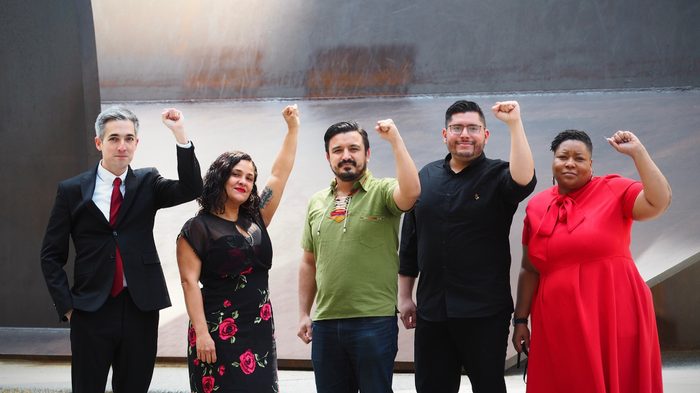
I reported on that year’s grassroots upsurge for In These Times’ March 2019 cover story, “Chicago’s Political Revolution.” The article closed with CTU President Stacy Davis Gates’ prediction that, “If I’m looking in a crystal ball, 2023 will actually be even more transformative.”
As prophesied, Davis Gates was speaking on stage at a victory party four years later, this time for Johnson who in May became Chicago’s 57th mayor. In that race, he faced off against Vallas, the establishment’s candidate who initially held a large lead in the polls and outspent Johnson two-to-one. On the campaign trial, Johnson and Vallas outlined radically opposing visions for how to govern the city.
Vallas leaned on his background working under Daley as a budget-cutter and school reform advocate, promising to continue in the mold of previous city leaders while embracing an extreme “law and order” approach to crime. Johnson, on the other hand, promised an agenda to reverse the disinvestment in, and criminalization of, communities of color. His platform included offering year-round youth employment, fully-funding public schools, reopening shuttered mental health clinics, making investments in affordable housing and reducing public transit fares. The administration plans to fund these projects largely through increased taxes on the rich and major corporations.
Johnson’s feat is undeniably transformative for a city where wealthy interests have long dictated neoliberal policies that shut community voices out of decision making. The new mayor comes from a union that organizes to upend this dynamic, and to put working people at the head of the table.
Wesley Lowery profiled Johnson in the June cover story for In These Times, in which he wrote, “Once inaugurated, Johnson will arguably become the most progressive politician in modern history to lead a major U.S. city.”
In a June interview with MSNBC host and journalist Chris Hayes, Johnson explained, “My politics, quite frankly, emerged out of my faith, out of my upbringing… out of my real experiences of seeing austerity budgets, neoliberal politics that shuttered schools, that privatized education, that shut down public housing — and [how] somehow we were supposed to be OK with that. And I wasn’t. And so that’s what caused me to … see my role as an organizer as a road to ultimately see justice prevail.”
There is an alternative
Through collective action and political organizing, the CTU has helped build a viable alternative to neoliberalism in Chicago — a city that’s been stuck in a cycle of shock doctrine policies for decades. As a result of the CTU and UWF’s involvement in the 2023 elections (along with other groups such as the Democratic Socialists of America), the Chicago City Council now boasts the most left-wing members in modern memory, including an expanded Democratic Socialist Caucus. And with Johnson’s victory in the mayor’s race, the city is now led by one of the engineers behind this left-wing alternative.
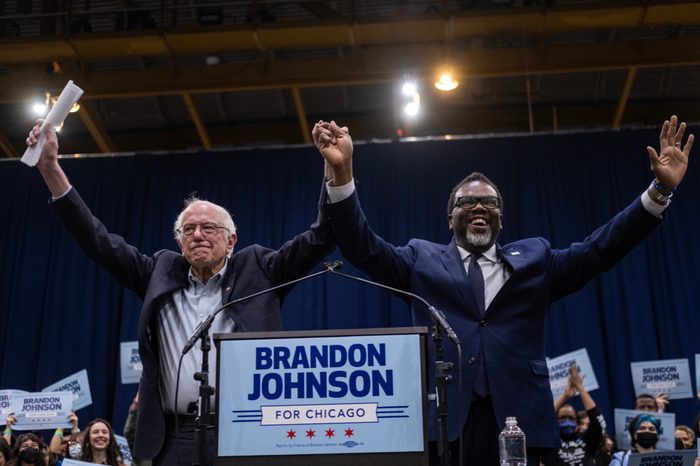
Friedman and his disciples in the Chicago school envisioned a future of unadulterated laissez-faire economics, where capital rather than democracy dictates the arrangement of society. Their model of neoliberalism became so prevalent in part because its ideologues have sold it as a solution to nearly any ill, whether it is a financial crisis, natural disaster or geopolitical conflict.
Today, the ravages of that system are ever apparent, especially in Chicago where many of its trademark policies were initiated. But voters have now embraced a wholesale departure from the political and economic paradigm that once seemed inescapable.
When the hegemony of Keynesianism began to fray in the 1970s, the market fundamentalists were ready to make their play for dominance. During this period, Friedman remarked that “when the time came that you had to change … there was an alternative ready there to be picked up.”
The new political leadership in Chicago is poised to offer a radically different alternative — one that rejects market exaltation and instead reverses long standing inequities, ensures economic security and provides for the elements of a dignified life. Last month, UWF Executive Director Emma Tai explained, “Chicago is the only city in America that is leading the way in advancing a real political alternative that is seriously contesting for political power to expand the public good.” Successfully realizing this project will undoubtedly require overcoming near constant challenges from those seeking to maintain a neoliberal status quo.
Already, business-aligned groups are coming out with counter proposals to Johnson’s tax-the-rich plans, including the Civic Federation which recently released a report proposing increased fees on residents, including on garbage collection, along with such far-fetched ideas as cutting the number of City Council members in half. Meanwhile, the head of the CME Group, which runs the powerful Chicago Mercantile Exchange, has threatened to move the financial derivatives marketplace out of the city over the prospect of increased corporate taxes.
But the new mayor and his allies appear unbent on turning the page.
As Johnson told Hayes earlier this month: “Yes, the wealthy in this city, and quite frankly the wealthy in this country, have to contribute more to a society which they’ve benefitted so much from.”
Miles Kampf-Lassin is Senior Editor at In These Times. Follow him at @MilesKLassin

